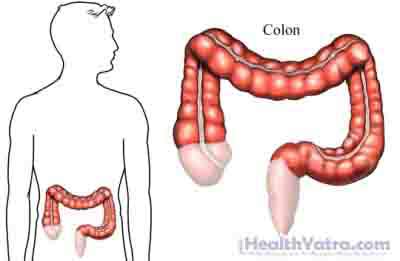সংজ্ঞা
Lactose intolerance is gastrointestinal upset due to the inability to digest significant quantities of lactose. Lactose is a sugar found in milk and other dairy products.
কারণসমূহ
Lactose intolerance is caused by a reduction in the digestive enzyme lactase. Lactase breaks down the sugar lactose into sugars that can be more easily absorbed. When not fully broken down, lactose ferments in the colon (large intestine) and causes symptoms.

Some people are born unable to make lactase. Others develop the intolerance over time.
ঝুঁকির কারণ
Factors that increase your risk of lactose intolerance include:
- Race: Black, Asian, or Native American
- Ethnicity: Jewish
- Family history of lactose intolerance
- Having certain illnesses or conditions that can damage the intestinal tract such as:
- Gastroenteritis (or infection in the intestinal tract)
- Celiac রোগ
- সিস্টিক ফাইব্রোসিস
- ক্রোনের রোগ
- কেমোথেরাপি
লক্ষণ
Symptoms of lactose intolerance generally begin within two hours of consuming milk or other dairy products. The severity of symptoms depends on how much lactase your body produces and how much lactose you eat.
উপসর্গ অন্তর্ভুক্ত:
- ক্র্যাম্পিং
- ফোলা
- Abdominal rumbling sounds
- Gas
- ডায়রিয়া
- আলগা টুল
রোগ নির্ণয়
The doctor will ask about your symptoms and medical history, and perform a physical exam. Your doctor may recommend a trial period of eating no milk or milk products to see if symptoms resolve.
Your doctor may want to measure your breath and stool. This can be done with:
- Hydrogen breath test
- Stool acidity test
Your doctor may want to examine your small intestine tissue. This can be done with abiopsy.
চিকিৎসা
Treatment focuses on managing symptoms. For most people, removing dietary lactose, especially in children and adolescents, would not be recommended. Milk and milk products provide sources of calcium and other food elements that are hard to replace. If complete elimination is chosen, then careful replacement of calcium is needed for good health.
চিকিত্সা অন্তর্ভুক্ত:
খাদ্যতালিকাগত পরিবর্তন
Dietary changes include:
- Keep a food diary of what you eat and what the reaction is. Discuss the findings with your doctor or a dietitian.
- Try eating smaller amounts of milk or milk products with a meal. It may reduce symptoms. Many people can tolerate 4-8 ounces of milk. You may have better tolerance for some of the following dairy products made from milk:
- Hard cheeses, such as cheddar and Swiss
- Yogurt
- Try lactose-free milk and lactose-reduced milk and milk products.
- Ask a dietitian for help choosing substitutes for dairy products or recommending supplements to ensure that you eat enough calcium.
- Nondairy foods rich in calcium include:
- Salmon
- Sardines
- Cooked spinach
- Oranges
- Broccoli
- Read product labels because other foods can contain lactose including:
- Breads
- Baked goods
- Processed cereals
- Instant potatoes, soups, and breakfast drinks
- Margarine
- Processed meats
- Liquid and powder milk-based meal replacements
- Protein powders and bars
- Salad dressings
- Candies
- Pancake mixes
- Non-dairy coffee creamers and whipped toppings
- Other words that indicate lactose are:
- হুই
- দই
- শুকনো দুধের কঠিন পদার্থ
- Nonfat dry milk
- Milk by-products
- Be aware that some medicines may contain small amounts of lactose.
ওষুধ
Your doctor may recommend lactase enzymes if you can tolerate only small quantities of lactose. The enzyme supplements come in liquid and chewable form. A few drops of the liquid added to milk, which is allowed to sit overnight, can decrease the amount of lactose in the milk. Tablets are chewed or swallowed before eating foods that contain lactose.
প্রতিরোধ
There are no guidelines to prevent lactose intolerance.
